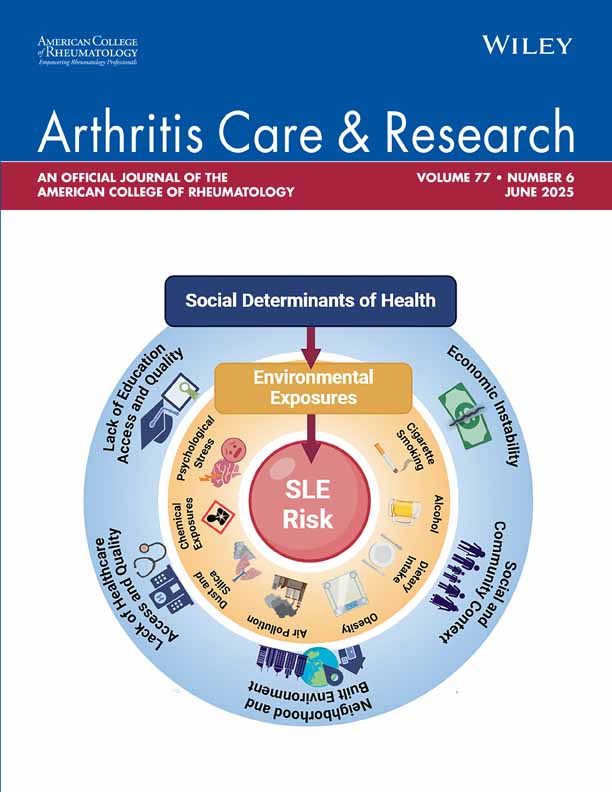Evaluation of renal improvement in juvenile systemic lupus erythematosus: Comment on the articles by Ruperto et al
To the Editors:
We read with great interest the 2 recent articles by The Pediatric Rheumatology International Trials Organization (PRINTO) and the American College of Rheumatology (ACR) on the provisional criteria for the evaluation of response to therapy in juvenile systemic lupus erythematosus (SLE) (1, 2). These consensus statements with prospective evaluation of clinical progress are important in developing good models of care for affected children and in defining the prognosis of these children according to response to treatment.
We were pleased to see that renal involvement was one of the 5 final domains included in this core set, due to its high incidence, increased severity, and major influence of prognosis in children (3, 4). However, we are not in agreement with the definition of renal involvement of children and adolescents diagnosed with SLE. The suggested variable for evaluation of renal involvement was proteinuria as defined by a 24-hour urine specimen collection.
Pediatric nephrology practices vary around the world, but 24-hour urine specimen collections are often technically difficult to obtain and can be unreliable, especially in younger children. Therefore, instead we advocate monitoring with early morning spot urine specimen albumin:creatinine ratios or protein:creatinine ratios (5).
In addition, validating improvement in lupus nephritis by measuring proteinuria may be inaccurate because it may represent active or chronic disease. Significant proteinuria in active disease is largely alleviated by the use of immunosuppressive agents. We would also normally use an angiotensin-converting enzyme inhibitor and/or angiotensin II type 1 receptor blocker to reduce proteinuria in children with SLE. Therefore, these therapeutic interventions render proteinuria a less reliable disease marker. Hypoalbuminemia may reflect inflammation and nutrition status as well as the degree of proteinuria. However, monitoring serum albumin levels may assist in determining improvements in children with nephrotic syndrome as part of their lupus nephritis.
Proteinuria is only one of the important measurements of improvement of renal function; the others are blood pressure, and estimated or measured glomerular filtration rate (GFR). It has not been clearly shown which of these parameters or variables is the best measurement of improvement of renal disease. Therefore, we feel that additional information on improvement should include hypertension (defined by blood pressure above the 95th percentile for age, sex, and height percentile) (6). Many children with active lupus nephritis are hypertensive and will improve with treatment of their nephritis. However, blood pressure is similar to proteinuria, in that the variable is confounded by the treatment itself (i.e., antihypertensive medications).
A normal serum creatinine level was defined as 0.6–1.2 mg/dl (53–106 μmol/liter) in the additional measures of the final core set. We believe that this is not acceptable because the serum creatinine value always needs to be related to the size of the child and his or her muscle mass. Serum creatinine levels in the higher range listed above are unlikely to be normal, even in an adolescent girl with SLE. Instead, a more accurate marker of renal function would be to estimate the GFR using creatinine clearance or Schwartz formula (7) or formally evaluate the GFR (e.g., using 51Cr-labeled EDTA or iohexol) in those patients whose estimated GFR was <80 ml/minute/1.73m2.
In summary, outcome studies of children with SLE and lupus nephritis should include core data on not only the degree of proteinuria, but also renal function and blood pressure. We believe the present criteria are insufficient to evaluate improvement of renal involvement of SLE.
Stephen D. Marks MBChB, MRCP, FRCPCH*, Kjell Tullus MD, PhD, FRCPCH*, * Great Ormond Street Hospital for Children NHS Trust London, UK.




